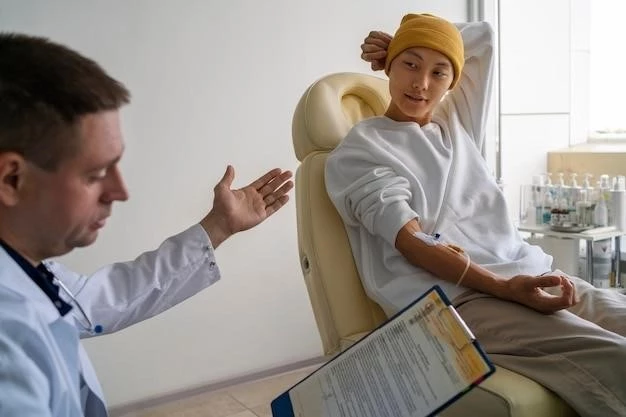Understanding Englemann Disease
Englemann Disease‚ also known as diaphyseal dysplasia‚ is a rare genetic condition that affects bones in children. Understanding the symptoms‚ diagnosis‚ treatment options‚ and potential complications is crucial for managing the disease effectively.
Overview of Englemann Disease
Englemann Disease‚ also known as diaphyseal dysplasia‚ is a rare genetic disorder that primarily affects the bones. It belongs to a group of conditions called osteopetrosis‚ characterized by abnormally dense bones. In Englemann Disease‚ the bones are thicker than normal‚ which can lead to various complications. This condition typically manifests in childhood and may result in short stature‚ limb pain‚ and skeletal abnormalities.
Patients with Englemann Disease may experience bone dislocation‚ fractures‚ and restricted growth due to the impact on bone development. The genetic mutation responsible for this disease can cause issues with bone formation and maintenance‚ impacting the structure and function of the skeletal system. Early diagnosis is essential to monitor the progression of the condition and implement appropriate treatment strategies.
Understanding the genetic underpinnings of Englemann Disease is crucial for healthcare providers to tailor interventions to individual patients. By recognizing the symptoms and effects of this rare genetic disorder‚ medical professionals can offer targeted care to improve the quality of life for those affected. Stay informed about the latest advancements in genetics research to better manage Englemann Disease and provide optimal support to patients and their families.
Symptoms and Effects on Bones
Englemann Disease presents a range of symptoms affecting the skeletal system. Children with this condition may experience pain in the limbs‚ restricted movement‚ and an increased risk of fractures. The bones in individuals with Englemann Disease are denser than normal‚ leading to difficulties in bone growth and development.
Due to the impact on bone structure‚ patients may exhibit physical deformities‚ such as bowing of the legs or arms‚ short stature‚ and joint dislocations. These skeletal abnormalities can affect mobility and overall quality of life. It is essential to recognize these signs early on to initiate appropriate interventions and prevent further complications.
Individuals with Englemann Disease may also face challenges with bone healing and maintenance‚ making them susceptible to fractures and dislocations. Regular monitoring of bone health and addressing any issues promptly through medical interventions is crucial to minimize the impact of the disease on the individual’s physical well-being.
Consulting with healthcare professionals specializing in bone disorders can provide valuable insights into managing the symptoms and effects of Englemann Disease. By understanding the specific bone-related complications associated with this genetic condition‚ patients and caregivers can make informed decisions regarding treatment options and lifestyle modifications to support optimal bone health.
Diagnosis in Children

Diagnosing Englemann Disease in children involves a comprehensive evaluation of symptoms‚ family medical history‚ and genetic testing. Healthcare providers may conduct imaging studies‚ such as X-rays and bone scans‚ to assess bone density and structure. Blood tests can help identify genetic mutations associated with the condition.
It is crucial for parents and caregivers to communicate any concerns about their child’s bone health to medical professionals promptly. Early detection of Englemann Disease allows for timely intervention and management of the disease. Collaborating with a multidisciplinary team‚ including geneticists‚ orthopedic specialists‚ and pediatricians‚ can facilitate an accurate diagnosis and personalized treatment plan for the child.
Genetic counseling may be recommended to help families understand the inheritance pattern of Englemann Disease and make informed decisions regarding family planning. By proactively addressing the diagnostic process‚ children affected by this genetic disorder can receive the necessary care and support to optimize their health outcomes and quality of life.
Treatment Options
Managing Englemann Disease in children involves a multidisciplinary approach focused on improving bone health and quality of life. Treatment options may include a combination of physical therapy‚ medications‚ orthopedic interventions‚ and lifestyle modifications. Physical therapy plays a crucial role in maintaining mobility‚ strengthening muscles‚ and managing pain associated with the condition.
Physicians may prescribe medications to help alleviate discomfort and manage bone-related symptoms. Orthopedic interventions‚ such as bracing or surgical procedures‚ may be recommended to address bone deformities‚ fractures‚ or joint dislocations. Custom orthotic devices or braces can provide support and stability to affected bones‚ promoting proper alignment and function.
Individualized treatment plans tailored to the child’s specific needs and disease severity are essential for optimizing outcomes. Regular monitoring by healthcare professionals is necessary to track progress‚ adjust interventions as needed‚ and address any complications that may arise. Engaging in open communication with the healthcare team can help parents and caregivers make informed decisions about treatment modalities and support strategies for their child.
Braces and Surgical Interventions
Bracing and surgical interventions are commonly employed in the management of Englemann Disease to address skeletal deformities and improve bone structure. Braces‚ orthotic devices‚ or splints may be recommended to support weakened or misaligned bones‚ promoting proper alignment and minimizing the risk of fractures;
Surgical procedures‚ such as osteotomy (bone reshaping) or corrective surgeries‚ may be necessary in more severe cases to restore bone integrity and functionality. These interventions are aimed at improving mobility‚ reducing pain‚ and enhancing the overall quality of life for children with Englemann Disease.
Consulting with orthopedic specialists and surgeons experienced in treating bone disorders is essential to explore the most suitable bracing or surgical options for the child. Understanding the potential benefits‚ risks‚ and recovery process associated with these interventions can empower parents and caregivers to make informed decisions regarding their child’s treatment plan.
Potential Complications
Englemann Disease can lead to various complications affecting the skeletal system and overall health of children. The increased bone density characteristic of the condition can result in bone fragility‚ making individuals more susceptible to fractures. Furthermore‚ skeletal deformities and joint dislocations may impact mobility and quality of life.
Chronic pain‚ limited range of motion‚ and difficulties with daily activities are common challenges faced by children with Englemann Disease. Additionally‚ complications related to surgical interventions or long-term medication use may arise‚ necessitating close monitoring by healthcare providers.
It is crucial for parents and caregivers to be aware of the potential complications associated with Englemann Disease and work proactively with the healthcare team to mitigate risks and optimize the child’s well-being. Regular follow-up appointments‚ adherence to treatment recommendations‚ and open communication with medical professionals can help address complications promptly and improve the overall management of the condition;
Lifespan and Quality of Life
Englemann Disease can impact the lifespan and quality of life of affected children. While the condition may pose challenges in bone health and physical function‚ early diagnosis and comprehensive management strategies can help improve outcomes and overall well-being.
With advancements in medical treatment and supportive care‚ individuals with Englemann Disease can lead fulfilling lives and achieve milestones with appropriate support. Regular monitoring‚ adherence to treatment plans‚ and access to specialized healthcare services are essential for enhancing quality of life and addressing potential complications.
Maintaining a positive outlook‚ engaging in physical activities suitable for the child’s condition‚ and fostering a supportive environment can contribute to a better quality of life for children with Englemann Disease. By focusing on holistic care that encompasses physical‚ emotional‚ and social aspects‚ families can promote resilience and well-being in the face of this rare genetic disorder.
Conclusion⁚ The Importance of Early Intervention
Early intervention is key in managing Englemann Disease and mitigating its impact on children’s bone health and overall well-being. Timely diagnosis‚ personalized treatment plans‚ and regular medical monitoring are essential components of early intervention strategies.
By identifying symptoms early and initiating necessary interventions promptly‚ healthcare providers can optimize outcomes for children with Englemann Disease. Collaborating with a specialized healthcare team‚ including geneticists‚ orthopedic specialists‚ and physical therapists‚ can provide comprehensive care tailored to the child’s specific needs.
Empowering parents and caregivers with knowledge about the condition‚ treatment options‚ and potential complications enables them to advocate for their child’s health and well-being effectively. Through early intervention and ongoing support‚ children with Englemann Disease can receive the care they need to thrive and lead fulfilling lives despite the challenges posed by this rare genetic disorder.
